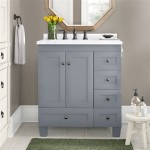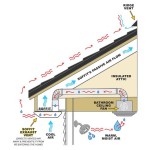Should I Use Insulated Duct For Bathroom Fan?
Bathroom fans are essential for maintaining a healthy and comfortable bathroom environment. They help to remove moisture, odors, and pollutants, preventing mold growth, mildew, and other issues. However, the effectiveness of a bathroom fan can be greatly affected by the ductwork that connects it to the exterior of the house. Choosing the right type of ductwork is crucial for ensuring optimal ventilation and minimizing energy waste.
Insulated ductwork offers several advantages over standard ductwork when it comes to bathroom fans. Its insulation helps prevent condensation and heat loss, making it a more efficient and effective solution for bathroom ventilation. In this article, we will explore the benefits and drawbacks of using insulated ductwork for bathroom fans, helping you make an informed decision for your home.
Benefits of Insulated Ductwork for Bathroom Fans
Insulated ductwork offers several advantages over standard ductwork when it comes to bathroom fan installations. The primary benefit lies in its ability to prevent condensation and heat loss. This is especially important for bathroom fans since they often vent warm, humid air to the exterior. Without proper insulation, the ductwork can become a breeding ground for mold and mildew, posing health risks and potential damage to your home.
Insulated ductwork also helps reduce energy costs. By minimizing heat loss, it ensures that the fan operates more efficiently, requiring less energy to remove the same amount of moisture and air. This translates into lower energy bills and a reduced carbon footprint. Additionally, insulated ductwork can minimize noise levels, making the bathroom fan quieter during operation. This is particularly beneficial for bathrooms located near bedrooms or areas where sound isolation is crucial.
Drawbacks of Insulated Ductwork for Bathroom Fans
While insulated ductwork offers several benefits, it's not without its drawbacks. One primary consideration is the cost. Insulated ductwork is typically more expensive than standard ductwork, especially for longer runs. Installing insulated ductwork also requires more labor compared to standard ductwork, adding to the overall cost of the project.
Another drawback is the potential for condensation buildup within the insulation itself. While insulated ductwork helps prevent condensation on the exterior of the duct, it can still occur within the insulation if the airflow is not properly managed. This can create a damp environment within the insulation, potentially leading to mold and mildew growth.
Finally, insulated ductwork can be more difficult to work with during installation. Its added bulk and weight can make it challenging to navigate corners and tight spaces. This can also increase the complexity of the installation process, requiring more time and expertise.
Factors to Consider When Choosing Ductwork for Bathroom Fans
When choosing between insulated and standard ductwork for your bathroom fan installation, several factors should be considered.
1.
Climate and Location:
If you live in a humid climate, insulated ductwork is strongly recommended. The insulation will help prevent condensation and mold growth. Additionally, if the bathroom is located in an unheated area, insulated ductwork will help reduce heat loss and energy costs.2.
Duct Length and Run:
Long duct runs will benefit more from insulation. The longer the duct run, the greater the potential for heat loss and condensation. This is especially true for runs that pass through unheated areas of the home.3.
Budget:
Insulated ductwork is generally more expensive than standard ductwork. Consider your budget and prioritize its importance. The added cost may be worth it for long-term savings on energy costs, noise reduction, and reduced maintenance. However, if budget is a primary constraint, standard ductwork may be a more affordable option.4.
Installation Complexity:
The complexity of the installation should also be considered. Insulated ductwork can be more challenging to install due to its bulk and weight. If the installation involves tight spaces or complex runs, standard ductwork may be easier to work with. Consider the experience and expertise of the contractor when making this decision.Ultimately, the decision of whether to use insulated or standard ductwork for your bathroom fan should be based on a careful evaluation of the factors mentioned above. By weighing the benefits and drawbacks of each option, you can choose the best solution for your specific needs and budget. This careful consideration will ensure optimal ventilation, energy efficiency, and a healthy and comfortable bathroom environment for years to come.

Venting A Bath Fan In Cold Climate Fine Homebuilding

Blog

What Duct To Use For A Bathroom Fan Fastlec

Inspecting The Bathroom Exhaust Internachi

Inspecting The Bathroom Exhaust Internachi

Bathroom Exhaust Fans Chicago Suburbs

Better Insulation Will Prevent Water Stains Around Bath Fans Diy

Installing A Bathroom Fan Fine Homebuilding

Fixing Bathroom Ventilation Problems Poorly Installed Ductwork And Insulation Jlc

Inspecting The Bathroom Exhaust Internachi
Related Posts







